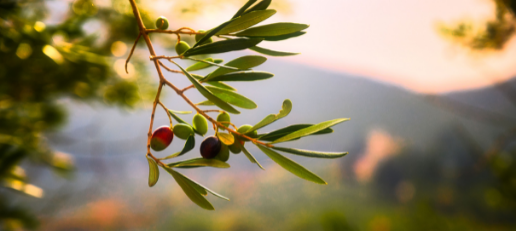
THR's opinion
The Rise of Oleotourism – Seeking Olive Oil at Its Origen
What is “oleotourism”?
Olive oil tourism - or oleotourism - refers to the set of tourism activities combining the culture, processing, and gastronomy related to olive oil, whose interest has been spreading rapidly in recent years thanks to its high sensory component and relative novelty compared to more standard tourism activities.
Olive oil production is generally concentrated on the coasts of the Mediterranean basin, with Spain being the largest producer, accounting for more than 45% of world production, followed by Italy and Greece. Some of the producing regions, in particular Andalusia in southern Spain, have successfully capitalized on olive oil’s potential as a tourist attraction and have established a wide offer around the product.
The oleotouristic program often follows a winery experience model: tours around the different facilities explain how olive oil is produced, then are followed by olive oil tasting sessions. In addition, many tours now include a visit to the fields, incorporating a closeness-to-nature component which explains the production process from seed to bottle.
How does oleotourism support a region?
Oleotourism is an activity which entails multiple benefits for the regions where it is carried out. Firstly, the activity provides an additional diversified income source and provides an economic dynamism with may otherwise be absent, generating direct jobs, encouraging entrepreneurship, and supporting other indirect tourism service providers in the region.
As well, oleotourism recognizes and preserves local traditions and culture, as well as being a sustainable activity and encouraging the participation of a community.
However, olive-oil producing regions often encounter similar barriers to peer rural tourism offerings, such as lack of product awareness partly induced by underfunded or uncoordinated marketing activities, ancillary tourism infrastructure deficiencies that limit a broader tourism appeal, and a lack of formal tourism training for participants.
Opportunities and development
As a niche tourism offering on the rise, there are a number of opportunities and projects currently in development for the sector.
First, oleotourism has great potential to leverage synergies with other activities, especially gastronomic offerings such as wine tourism, but also with others related to rural environments, culture, and nature.
As well, oleotourism can mitigate the perennial tourism problem suffered by many Mediterranean countries: the seasonality of the sector. As the oleotouristic processes of greatest interest such as the harvesting and extraction of oil take place between October and December – the busiest months for oleotourism and some of the least busy for general tourism – the activity could help reduce seasonality in Mediterranean countries if properly promoted and developed.
Case study: Jaén, Spain
One of the most successful case studies of oleotourism is the Spanish region of Jaén. Local governments created a "Oleotour Jaén", a project whose objective is to bring together the province's entire oleotourism offer and to stimulate and promote the sector. The activity promotion includes information on where to go, the type of experiences offered, routes to follow, accommodation, museums, tasting sessions... and, of course, information on olive oil and the variants produced in Jaén.
Regions like Jaén have now become a benchmark for research into this tourism activity. Experts now recommend 3 main actions for the establishment of olive oil tourism activities: entrepreneurial education, wide-scope promotions, and financial support. Public administrations play a key role in the future development of this industry.
Visitor profile
Various studies suggest that the profile of the olive oil tourist is generally a consumer between 50 and 60 years of age, with medium-high levels of education and income, traveling with family or groups of friends.
The studies also show a mainly national tourist, with a lower reach into international markets. In the case of Spain, the national visitor represents more than 90% of the total, and, in addition, almost half of the tourists belong to the same region. Consequently, more than 60% do not book accommodation, as they do a daytrip or stay with family or friends.
Nevertheless, studies in other regions of Europe, such as Greece, highlight the great interest in the oleotourism product among visitors from Northern Europe, especially from Scandinavian countries, who are more willing to purchase the product during their trips.
In Sum
Olive oil tourism is an activity whose interest and popularity are growing rapidly, and which certain regions of the Mediterranean are already taking advantage of.
Its market volume is still small relative to other offerings, yet there is great opportunity for the economic and tourism development of rural olive oil producing areas, which will undoubtedly lead many regions to invest in this product.